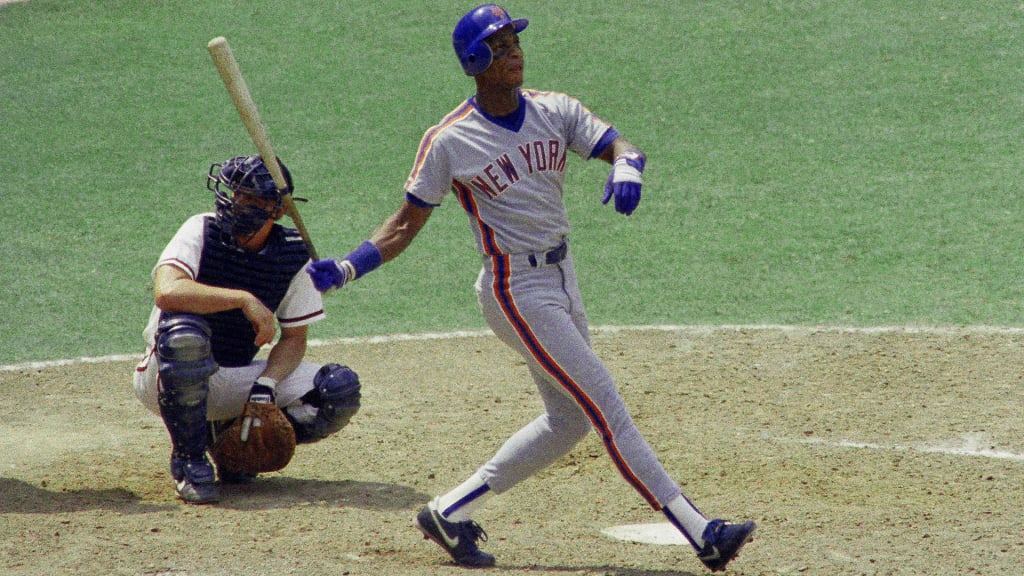
NEW YORK -- The prettiness or “sweetness” of a swing is not always easy to define. An aesthetically pleasing swing is not necessarily a successful one, and vice versa; the Mets’ best active hitter, Jeff McNeil, nearly won a batting title last year with an unorthodox, sometimes even jerky swing. That’s not a bad thing.
Then there’s that old saying about beauty and the beholder’s eye.
And yet sometimes, the aesthetics of a swing are obvious, intrinsic. As MLB.com takes a look this week at some of the best in history throughout the league, it seemed imprudent to stop at a single player for the Mets. In alphabetical order, here’s a summary of those featuring the sweetest swings in franchise history:
Robinson Canó
Career batting average: .302
Better known for his days with the Yankees, Canó brought his effortless left-handed loop to Queens last season. While the results weren’t quite what he wanted, it wasn’t the fault of a swing that remains both technically sound and aesthetically pleasing. So natural is Canó’s game that he has been criticized in the past for looking like he’s barely trying.
“I like the tempo of it all,” Canó’s ex-hitting coach, former Met Howard Johnson, told The Seattle Times in 2014. “I like the way it flows. It’s smooth. He’s always on time. He’s always in the right position right before he swings the bat.”
Michael Conforto
Career batting average: .253
Working with personal swing coach Curt Nelson in past offseasons, Conforto practiced in front of an array of mirrors so that he could identify and correct any imperfections. His left-handed swing has always resembled that of one of his childhood idols growing up in the state of Washington, Ken Griffey Jr.
Like Canó, Conforto’s swing looks and works best when he’s approaching a 70-percent effort level -- any more, and Conforto risks tightening up and jerking toward the ball.
“It actually makes some people mad,” Nelson said last year. “When other hitters are watching him, they’re going, ‘Oh my God, this guy’s not even trying and the ball’s going so far. How is that possible?’ It’s a gift. It really is.”
Keith Hernandez
Career batting average: .296
Steady as they come, Hernandez used his beautiful left-handed stroke to hit between .297 and .344 every year from 1979-86. His ability to hit to all fields was a matter of pride; his 426 career doubles was the result. Hernandez wasn’t a power hitter, but a pure hitter, with one of the smoothest swings of his era. Not surprisingly, the man who has become one of the game’s most popular color commentators offered a fine description.
“A great swing is fluid, a series of mild waves lapping upon the shore,” he said in a text message, describing his own swing as “beautiful.”
John Olerud
Career batting average: .295
Because Olerud spent only three seasons in New York, it can go overlooked that he is the franchise’s career leader in both batting average and on-base percentage -- both by wide margins.
For those who haven’t yet noticed, there is one obvious trend on this list: Every hitter included is left-handed. While theories abound regarding why lefties tend to have “prettier” swings, the most logical explanation is that they can move fluidly from their swings toward first base without changing momentum. Olerud was a prime example, utilizing a swing so smooth that his Blue Jays teammates, according to a 1993 Sports Illustrated story, frequently compared him to Roy Hobbs from “The Natural.”
Darryl Strawberry
Career batting average: .259
Unlike the others on this list, Strawberry was a pure power hitter who crushed 39 homers in consecutive seasons from 1987-88. But Strawberry didn’t sell out for power; it came naturally as a result of his fluid uppercut, drawing a wide arc with his bat as he swung. His tall stance and sometimes exaggerated leg kick never seemed to upset his flow. To the contrary, Strawberry used them to frame a swing that could do extensive damage whenever he made contact.
Rusty Staub
Career batting average: .279
There’s a reason why Staub was one of the most effective pinch-hitters ever, ranking 19th in Major League history with 99 of them over a 23-year career. Staub’s stroke, which he shortened by choking up several inches on his bat, made him uniquely suited to succeeding against unfamiliar pitchers late in games.
“I didn’t have the perfect swing,” Staub said before his death in 2018. “I had to work at it to be successful as a hitter. I discovered at a very early age that nothing was going to come easy for me, that I’d have to work for my success. And when I was successful, it was very rewarding because I knew how hard I had worked to get to that point.”


